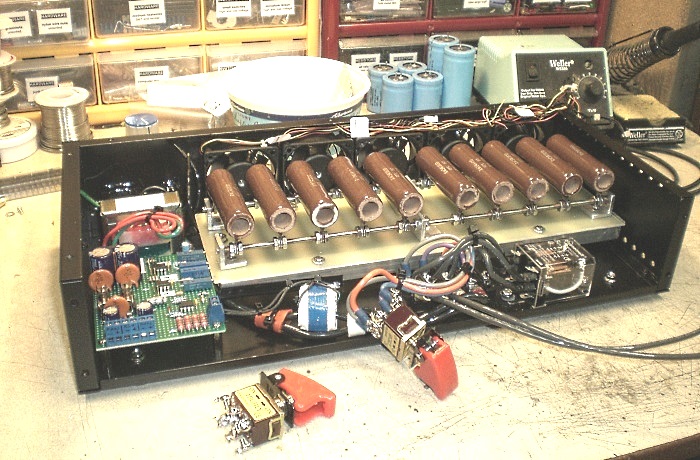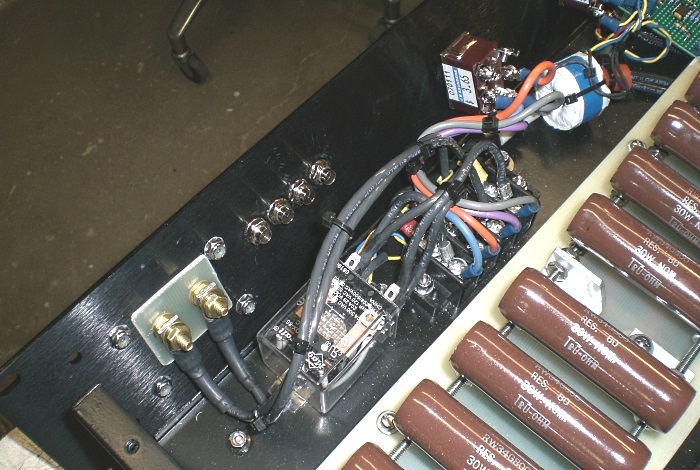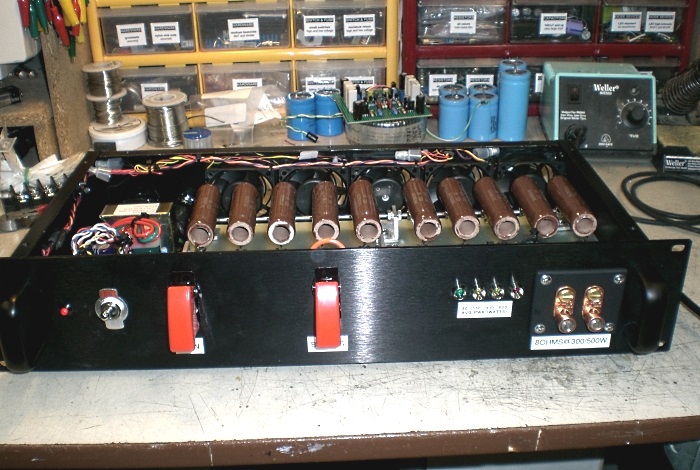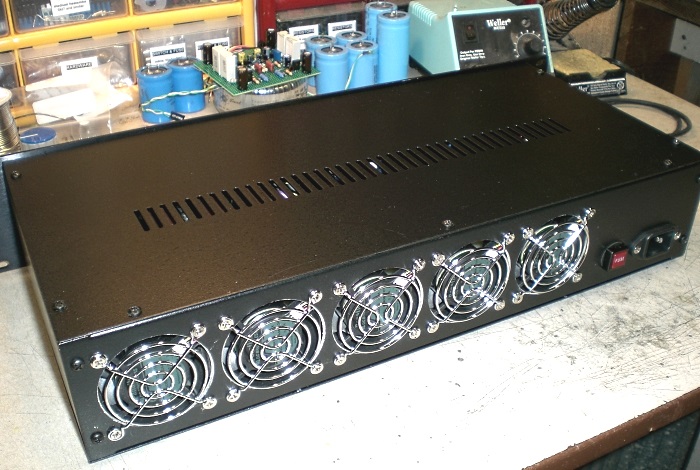300W and beyond with forced-air cooling.
The unit came together without too much fuss. The connections from the resistor bank were brought out to a terminal block and mated up with control switches and a relay:

Figure 9. Wiring up the terminal block and switches.
Zooming out, more of the final layout is apparent:

Figure 10. The installed layout of the load bank and other components.
The "fighter jet" switches with the spring-loaded shutoff guards handle two functions. One switch energizes the load bank through the power relay, allowing badly-behaved loads to be shut off quickly without arcing damage to the switch itself. The other switch is a bypass to energize the load bank directly, enabling low-power passive tests with no AC supply attached.
Viewed from the inside:

Figure 11. The interior layout of the front panel.
The LED holders were already installed in the above picture, but the LEDs were not yet inserted.
Once all was together, the only thing left to do was install the cover and apply labels. The copper connection terminals are normally sold as grounding lugs. I mounted them on a custom fiberglass plate using brass hardware.

Figure 12. Front view with the top cover off.
Viewed from the back, there are fan grills, a fuse holder, and IEC-style AC inlet.

Figure 13. Rear view, fully assembled.
Lessons learned: To recap, always use a regulated power supply for precision circuits, and do not try to build instrument transformers without having some kind of valid design methodology. The basic function of the dummy load works fine, and it has been tested in excess of 1000 W for brief periods with forced-air cooling. But none of the power metering circuit works, and that was a time-consuming section to design and build.
That being said, a high-power dummy load is a very useful tool to have, and while this one was much more expensive to design and build compared to my first unit, it is also jobsite-durable should the need ever arise. §
aaronv dot net -at- gmail dot com